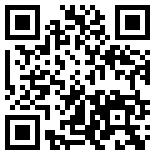要想提高托??荚嚨膶懽鞑糠郑紫缺仨毩私馔懈懽骺荚嚨目荚囶愋汀D墙裉炀秃托【幰黄饋砜纯催@篇關(guān)于“托福寫作題型介紹”的內(nèi)容,,趕緊來看看吧!
[圖片0]
?
1. 應(yīng)不應(yīng)該題
?
此類題目通常在標(biāo)題中包含“should”一詞,,或者包含““應(yīng)該做”或“不應(yīng)該做”的含義,詢問是否應(yīng)該這樣做,,考生應(yīng)根據(jù)這些“應(yīng)該”和“不應(yīng)該”來撰寫文章,。
?
例如:Do you agree or disagree with following statement:all school teachers should be required to take courses every five years to update their knowledge。
?
2. 絕對題
?
這種類型的題目通常帶有絕對的語氣詞,,例如only,,must,,always等,。一般來說,此類命題的題目更清晰,,語氣也很強烈,,就是詢問是否同意這個說法,并根據(jù)這個想法進(jìn)行構(gòu)思文章,。
?
例如:Do you agree or disagree with following statement:only movies that can teach us something about real life are worth,。
?
3. 現(xiàn)象證明題
?
在這類托福獨立寫作題目中,主要目的是討論一種現(xiàn)象,,這種現(xiàn)象現(xiàn)在可能已經(jīng)存在或?qū)砜赡馨l(fā)生,,詢問是否會出現(xiàn)這種現(xiàn)象,考生按照這個思路去拓展寫作文章,。
?
例如:Do you agree or disagree with following statement:in modern times,,grandparents cannot give their grandchildren useful advice because the world of today are too different than it was in the past。
?
4. 比較題
?
這種類型的題目在考試中也相對常見,,該題目將包含2或3個選項供選擇,。
?
這些選擇可能是不同事物的橫向比較,或者同一事物的縱向?qū)Ρ?,或者是今夕對比,,這比較常見。如果出現(xiàn)此類問題,,可能會同應(yīng)不應(yīng)該題或者是現(xiàn)象證明題進(jìn)行混搭,,這樣效果會更好一些。
?
例如:Do you agree or disagree with following statement:nowadays advertisements are more honest than they were in the past,。
?



